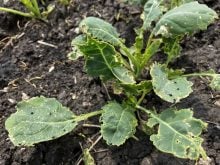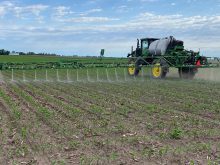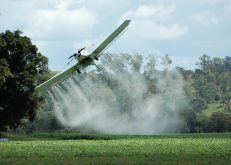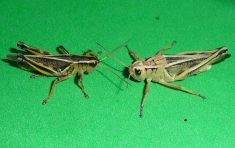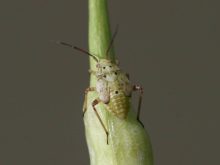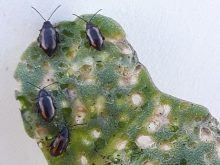Prairie growers should be checking their alfalfa fields for alfalfa weevils as soon as possible, say forage experts in Manitoba and Saskatchewan.
If weevil larvae numbers are high, the alfalfa crop should be cut immediately, weather permitting.
If that’s not possible, growers should consider a pesticide application.
“There are many alfalfa fields where if it’s not hayed or sprayed, very soon, there will be quite significant damage,” said Lorne Klein, Saskatchewan Agriculture’s forage specialist in Weyburn, Sask.
Adult alfalfa weevils lay eggs on the alfalfa plants in the spring. The larvae that emerge from the eggs feed on the leaves and growing points of the alfalfa plants.
Read Also

Farming Smarter receives financial boost from Alberta government for potato research
Farming Smarter near Lethbridge got a boost to its research equipment, thanks to the Alberta government’s increase in funding for research associations.
If the infestation is severe and no action is taken, the larvae will consume most of the leaves and chew on the growing point, stunting growth.
“It’s not going to grow any taller because they (will) continue to eat the growing points,” said Jane Thornton, a Manitoba Agriculture forage specialist who spoke at a June 22 Manitoba Beef & Forage Initiative field tour in Brandon.
“In the last week or week and a half, we’re starting to see the damage…. If you see that damage at the tips, I’d be very tempted to … go cut it.”
Klein said cutting the alfalfa stops the feeding because the larvae need green, growing plant tissue.
Manitoba Agriculture said in its June 19 crop report that alfalfa weevils have been detected in the southwest, the Parkland region and the Interlake.
Klein said populations are high in southeastern and southwestern Saskatchewan, and he’s heard reports of weevil damage in the Yorkton area.
He’s been scouting for weevil larvae since the middle of June with sweep nets. Growers don’t need to worry I a single sweep produces four or five larvae.
“But if you’re getting 40 or 80 per sweep, if you let that run its course, you’re going to have very significant damage,” he said.
If a grower doesn’t have a sweep net, there is another way to count the number of green larvae, which have a white stripe down the back and a black head.
Thornton grabbed a handful of alfalfa plants during the field tour and banged the plants on the side of a white bucket. The larvae fell off the plants and could be seen at the bottom of the pail.
The forage specialists said this is one of the worst years in recent history for alfalfa weevils, but it’s hard to know why.
Thornton said last year’s warm fall may have boosted weevil numbers, increasing the population that overwintered in 2017.
However, it seems like the problem is getting worse. Fifteen years ago weevils would damage a patch within an alfalfa field.
“Now, when I see it, often I’m seeing an entire 80 acres infested,” Thornton said.
“This is about as bad as I’ve seen it.”
Manitoba’s Interlake has a number of growers who produce alfalfa seed. Thornton said those producers might need to spray an insecticide because the plants won’t flower if a weevil infestation is severe.
Contact robert.arnason@producer.com






